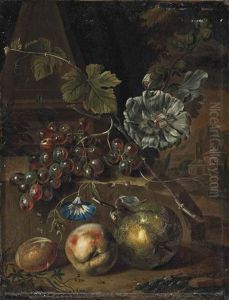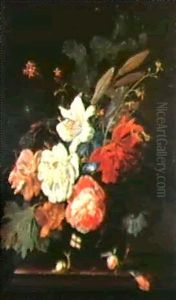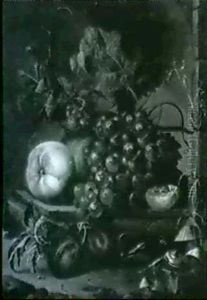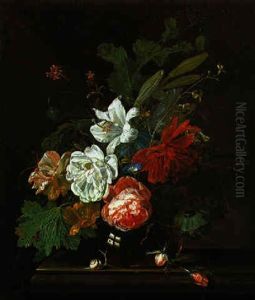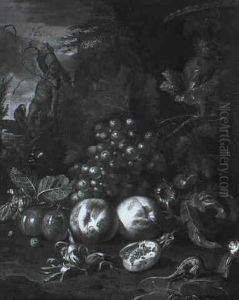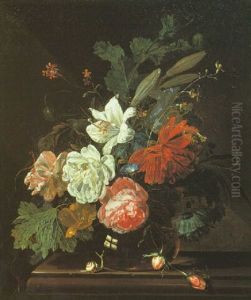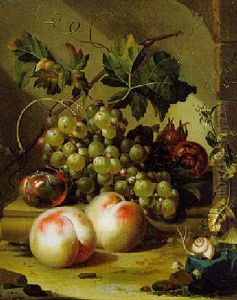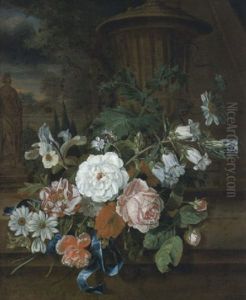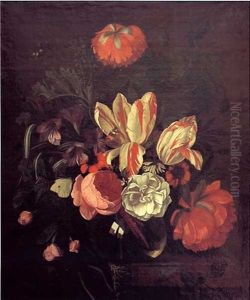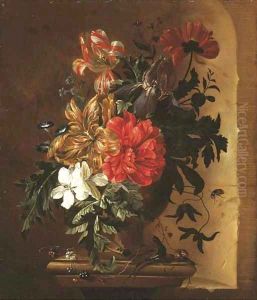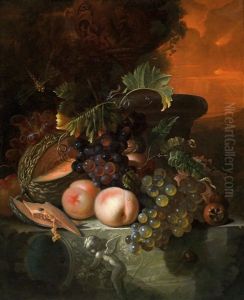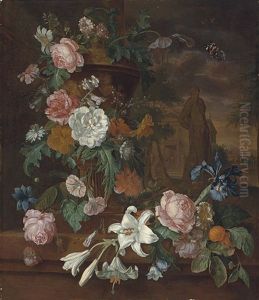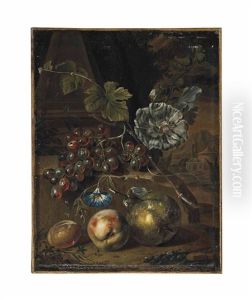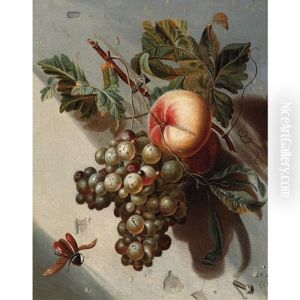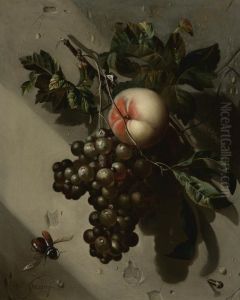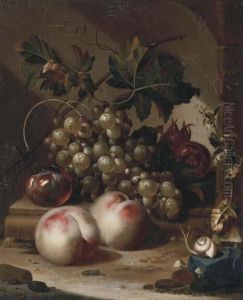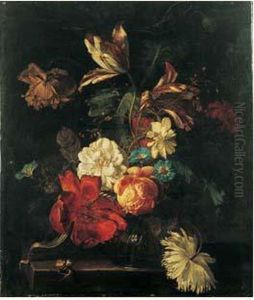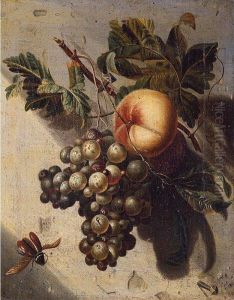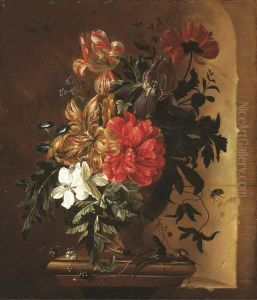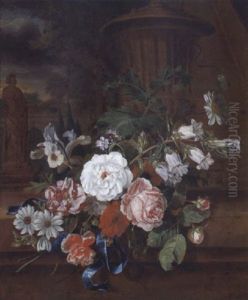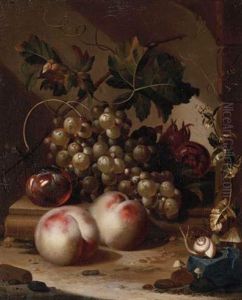Willem Grasdorp Paintings
Willem Grasdorp was a Dutch Golden Age painter known for his meticulous still lifes and interior scenes, embodying the rich detail and technical precision characteristic of the period. Born in 1678, Grasdorp emerged from a culture steeped in artistic achievement, during a time when the Netherlands was experiencing its Golden Age of painting. This era was marked by a flourishing of the arts, fueled by economic prosperity and a keen interest in domestic, religious, and genre themes. Grasdorp's work is often noted for its vibrant realism and the ability to capture the texture and materiality of objects, ranging from luxurious fabrics to gleaming kitchenware.
Grasdorp's artistic journey was likely influenced by the prevailing artistic trends of his time, including the works of earlier masters such as Jan Davidsz. de Heem and Willem Kalf, who were renowned for their still life compositions. Although not much is known about his personal life or training, it is evident from his surviving works that Grasdorp possessed a keen eye for detail and a profound understanding of light and shadow, which he skillfully employed to bring his compositions to life.
Throughout his relatively short career, Grasdorp specialized in still lifes, a genre that was immensely popular in the Netherlands during the 17th century. His paintings often depicted arrangements of flowers, fruits, and objects of daily use, meticulously rendered to highlight their beauty and transient nature. These works not only served as a display of the artist's technical prowess but also reflected the contemporary Dutch fascination with the natural world, scientific inquiry, and the exploration of global trade goods.
Willem Grasdorp's contribution to the Dutch Golden Age of painting, while perhaps not as widely recognized as some of his contemporaries, remains significant. His paintings, characterized by their precision and attention to detail, continue to be appreciated for their aesthetic qualities and as historical documents of the era's artistic and cultural values. Grasdorp's death in 1723 marked the end of a career that, though brief, left a lasting imprint on the tradition of still life painting in the Netherlands.
